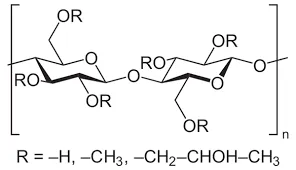
ធ្នូ . 17, 2024 18:01 Back to list
hydroxyethylcellulose powder
Hydroxyethylcellulose Powder Properties, Uses, and Applications
Hydroxyethylcellulose (HEC) is a non-ionic, water-soluble polymer derived from cellulose, a natural polymer obtained from plant cell walls. HEC is produced through the etherification of cellulose, resulting in a compound that exhibits excellent hydrophilicity. The powder form of hydroxyethylcellulose has garnered significant attention in a variety of industries due to its unique properties, making it a vital ingredient in many formulations.
One of the most notable features of hydroxyethylcellulose powder is its ability to enhance the viscosity of aqueous solutions. When added to water, HEC forms a clear, stable gel, which can be adjusted to meet specific viscosity requirements. This capacity for thickening makes it an invaluable component in various applications, ranging from cosmetics and personal care products to industrial formulations and food products. The viscosity can also be altered by changing the concentration of HEC, allowing for versatile applications across a broad range of industries.
In the cosmetics and personal care sector, hydroxyethylcellulose is widely used in products such as lotions, creams, shampoos, and gels. Its thickening properties not only improve the texture of formulations but also enhance the stability and performance of emulsions. Furthermore, HEC serves as a film-forming agent, providing a smooth and even application. This feature is especially important in products like hair styling gels and skin preparations, where a uniform layer is desirable for effectiveness.
The pharmaceutical industry also recognizes the importance of hydroxyethylcellulose powder
. It is often utilized as a binder in tablet formulations and as a thickening agent in topical drug delivery systems. In this context, HEC can help control the release of active pharmaceutical ingredients (APIs), ensuring a sustained and consistent delivery. Its biocompatible nature allows it to be safely used in various applications, including wound dressings and ocular formulations.hydroxyethylcellulose powder

In addition to its applications in cosmetics and pharmaceuticals, HEC plays a crucial role in construction and coatings. As a thickener, it is incorporated into cement, mortars, and adhesives, improving their workability and consistency. HEC’s water retention properties are particularly beneficial in construction applications, as they help enhance the durability and longevity of the materials. Similarly, in paint formulations, hydroxyethylcellulose is used to adjust viscosity and improve the adhesive properties of the paint, ensuring a smooth and even finish.
Food applications of hydroxyethylcellulose are also noteworthy. HEC acts as a thickening and stabilizing agent in various food products, including sauces, dressings, and dairy items. Its ability to form a gel and retain moisture makes it an ideal choice for enhancing texture and mouthfeel. Moreover, HEC is often employed in gluten-free formulations, helping to improve the structure and elasticity of baked goods.
Another advantage of hydroxyethylcellulose powder is its ease of use. It can be easily incorporated into formulations, requiring minimal processing. Its solubility in cold water makes it practical for various production methods, allowing manufacturers to integrate it seamlessly into their processes.
In summary, hydroxyethylcellulose powder is a versatile and valuable ingredient with a wide range of applications across multiple industries. Its thickening, stabilizing, and film-forming properties make it an essential component in cosmetics, pharmaceuticals, construction, and food formulations. As industries continue to evolve and seek innovative solutions, the demand for hydroxyethylcellulose is likely to increase, solidifying its position as a key player in the market. With its impressive performance characteristics and functional benefits, HEC showcases the potential of natural polymers in modern formulations, contributing to product safety, efficacy, and consumer satisfaction.
-
Versatile Hpmc Uses in Different Industries
NewsJun.19,2025
-
Redispersible Powder's Role in Enhancing Durability of Construction Products
NewsJun.19,2025
-
Hydroxyethyl Cellulose Applications Driving Green Industrial Processes
NewsJun.19,2025
-
Exploring Different Redispersible Polymer Powder
NewsJun.19,2025
-
Choosing the Right Mortar Bonding Agent
NewsJun.19,2025
-
Applications and Significance of China Hpmc in Modern Industries
NewsJun.19,2025







